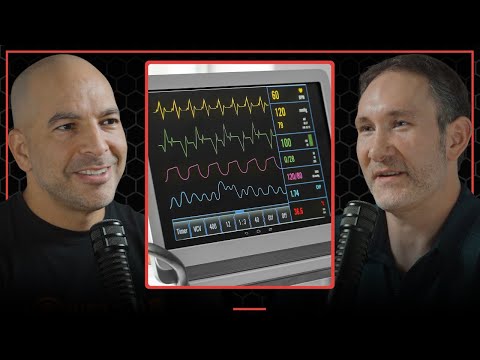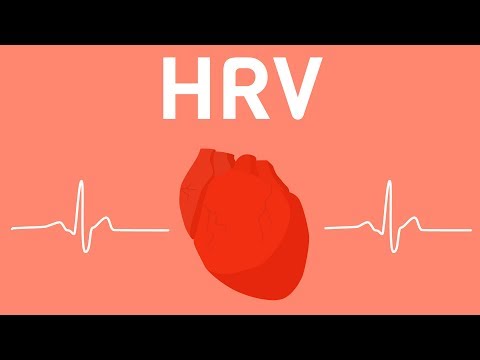Let’s get straight to it—many folks have heard of heart rate variability (HRV), but not everyone knows what it really means or why it matters. So, what is HRV? Simply put, heart rate variability is the measure of the variation in time between each heartbeat. That’s right! It’s not just about how fast your heart is beating, but also how well your heart is recovering and adapting to stress. High HRV is a sign that your autonomic nervous system (the one that controls your fight or flight responses) is in balance. Meanwhile, low HRV can mean trouble, giving you insights into stress levels and even underlying health problems.
Understanding HRV can empower you in your fitness journey. Think of it as your body’s trusty coach keeping track of how well you’re recovering from workouts, managing stress, and staying in peak condition. Just like how top athletes like Novak Djokovic monitor HRV to make data-driven decisions about their training, you can use this information to get shredded and build muscle, while avoiding burnout. So, let’s dive in and explore why HRV matters for your health, fitness, and overall well-being!

Understanding What Is HRV: The Basics of Heart Rate Variability
Heart Rate Variability is a treasure trove of information packed in one simple measurement. It tells us how well our heart handles stress and recovery. When you look at your heart rate, you might be surprised at how much it fluctuates. Just like life’s ups and downs, your heart rhythms vary. A healthy heart will have a wider range of beats between heartbeats, while a less healthy heart will beat more consistently, signaling potential problems.
Research backs this up—high HRV usually means your body can cope with stress better. Think about it: stressors in life, whether from work, family, or even your grueling workouts, can weigh you down if your HRV is low. You might recall times when you felt sluggish or didn’t have the energy to push through a killer workout. That might just be your HRV talking, telling you to take it easy or reassess your recovery strategies.
But hey, don’t worry! Monitoring HRV is easier than you might think. You can use wearable devices like WHOOP, the Oura Ring, or even an Apple Watch to track your heart’s performance and glean valuable health insights. So keep track of your HRV—it’s like having a window into your health!

Top 7 Reasons Why HRV Matters for Your Health
Managing stress is paramount, especially for fitness enthusiasts. High HRV is a sign that you’re effectively managing stress. Studies have shown that practices such as yoga and meditation can boost HRV. For example, the University of Kentucky found that those who practiced mindfulness showed significant improvements in their HRV. By using HRV as a tool, you can learn to ride the waves of life’s challenges without getting wiped out!
HRV can drive your fitness game forward. Athletes rely on HRV data to optimize training loads. Tennis star Novak Djokovic, for instance, uses HRV metrics to ensure he’s maximizing his workouts while still giving his body the recovery it needs. This balance prevents injuries and helps him stay at the top of his game. Imagine taking a page from Djokovic’s playbook to elevate your own fitness to the next level!
Consistently low HRV is a red flag for your heart health. The Framingham Heart Study discovered that participants with low HRV had a higher risk of developing heart disease. Making HRV part of your lifestyle could be a great preventive measure to keep your heart healthy. Keep your focus on building endurance and cardiovascular fitness to boost that HRV!
Sleep is crucial, and HRV has a strong connection to the quality of your rest. A study from the University of Arizona proved that those with higher HRV experienced better sleep and sharper cognitive function during the day. If you want to maximize your gains and find that elusive balance, prioritize improving your sleep—because a well-rested athlete is a champion athlete!
Emotional stability is as vital as your physical strength. Research from Harvard University found that individuals with higher HRV also enjoyed greater emotional resilience. By paying attention to your HRV, you can monitor your emotional state like a true champion. Use this information to unleash your potential in both the gym and life!
Chronic diseases like diabetes can affect your HRV patterns. Regularly measuring your HRV can provide insights to help manage these conditions effectively. Individuals with COPD, for instance, have altered HRV patterns that can be monitored for better health management. It doesn’t matter where you are on your health journey—knowing your HRV allows for more informed decision-making.
The mind-body connection is real, and HRV is the bridge. Low HRV is linked with anxiety and depression, according to researchers from the University of California, San Francisco. By understanding what HRV is and how it influences your mental health, you can embark on a personalized journey toward emotional wellness. Monitoring HRV might just lead you to the best version of yourself!

How to Measure and Improve Your HRV
Now that you know what HRV is and why it matters, how do you measure and boost it? Here are some pro tips:

The Bigger Picture: HRV as a Holistic Health Indicator
Understanding HRV takes your health to a new level. It goes beyond just numbers; it’s about listening to your body and its signals. HRV reflects the intricate dance between your physical health, emotions, and overall lifestyle. By keeping tabs on your HRV, you can gain insights that inform better habits and enable you to make proactive lifestyle decisions.
In a nutshell, HRV empowers you to aim for a life filled with vitality. Whether you’re focused on fitness, mental well-being, or just looking to level up your daily routine, HRV is a key player.
With innovative technology at our fingertips, we can unlock a treasure trove of health data. This, paired with knowledge about what HRV is, sets the stage for you to take charge of your wellness journey. Remember, every beat counts, and monitoring your HRV is one of the best things you can do for your health. Embrace this journey, and let’s work together to sculpt not only strong bodies but strong minds! You got this!

What Is HRV?
When you dive into the fascinating world of heart rate variability (HRV), you’re tapping into a remarkable indicator of your health. HRV measures the time interval between heartbeats, showcasing your body’s autonomic nervous system’s ability to adapt to stress. A high HRV often signals good health, while a low HRV might point to potential issues. It’s pretty remarkable how our heart’s rhythm can reflect not just physical, but also mental well-being!
The Science Behind HRV
Now, did you know that our body’s response to stimuli can influence HRV? That’s right! Similar to how athletes monitor their VO2 max for optimizing performance, HRV can help you understand your body’s resilience against stress. It’s like your heart is the captain steering the ship through choppy waters. The better the captain, the smoother the ride! Speaking of health, ever heard of Chinese cabbage? It’s packed with antioxidants that contribute to overall wellness and could indirectly support healthy HRV levels.
Cultural Insights and Trivia
Interestingly, cultures around the globe have their own takes on managing health and wellness. For example, the Japanese show a lot of appreciation for traditional practices like deep breathing and meditation, which can boost HRV. And if you’re a fan of Matsuri festivals, have you ever seen the iconic Fujimoto parade? It’s a great reminder of how community and joy play into our overall health, bolstering that indispensable HRV.
So, why does all this matter? Well, just like keeping up with the latest news about Quaker recalls, it’s crucial to stay informed about what influences your health. After all, HRV could cue you into when you might need to slow down or ramp up your self-care routine. To put it simply, understanding what is HRV is like having an internal compass guiding you through the intricate maze of health choices!



























